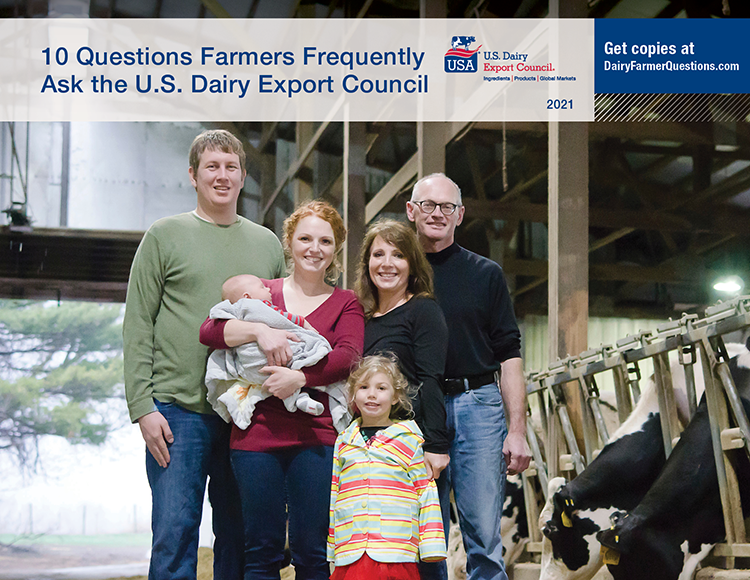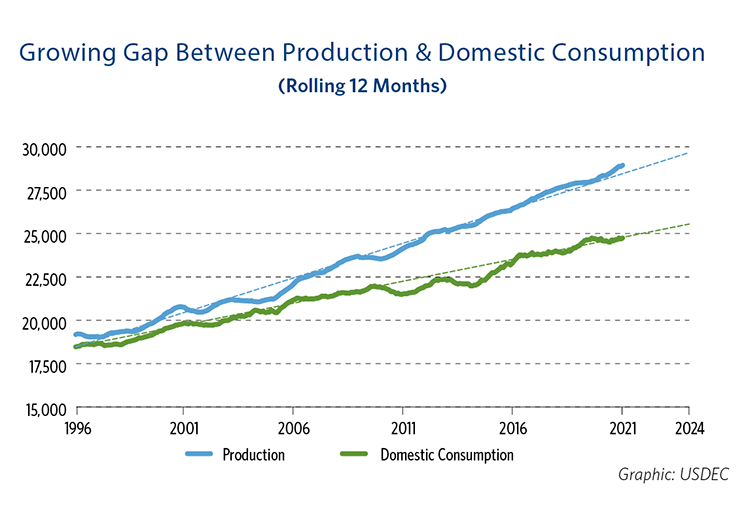With milk produced at highly efficient levels in this country and rising demand for milk-based products and ingredients overseas, the answer is yes. U.S. dairy farmers need the world, and the world needs U.S. dairy farmers.
At the U.S. Dairy Export Council, we have tapped the collective knowledge of our in-house global experts to create a free, downloadable white paper, "Ten Questions Farmers Frequently Ask USDEC."
The need for this resource became clear after dairy farmers asked us for a single document that concisely addresses their basic questions in plain language in one place. The white paper is an “Exports 101” resource for dairy farmers and anyone wanting a primer on U.S. dairy trade.
To get the white paper, click the button below or type this web address into your browser: DairyFarmerQuestions.com.

For Hoard’s DairymanIntel readers, we offer an excerpt from a more in-depth answer in our white paper, addressing the fundamental question, “Why are exports essential for U.S. dairy farmers?”
Exports are essential for balance
U.S. dairy farmers are the best at what they do. To confirm that, you must see the growth in U.S. milk production over the last decades with U.S. milk production growing by 15%, or 1.4% per year on average since 2000.
That increase has been so steady in part because every single year milk production per cow has risen as farmers have adopted innovative practices in technology, nutrition, genetics, and animal care. Indeed, rising productivity isn’t even limited to just more liquid milk per cow. Each hundredweight of milk contains more milkfat, protein, and lactose — or milk solids that are used to create the products consumers around the world enjoy.
Partially because of those productivity gains, U.S. milk production has been expanding at a faster rate than domestic demand, as you can see in the chart below. This is creating a growing surplus of milk that needs to find a home.

The good news is that exports have filled the gap, ensuring market balance by accounting for over 16% of total milk solids production in 2020.

This is a story we’ve told before. But we want to highlight one additional nuance regarding components.
Today, the U.S. is relatively balanced in milkfat, as domestic consumption of milkfat is roughly 97% that of production. Essentially, nearly all the milkfat produced in the U.S. stays in the U.S. That is not the case with skim stream. Domestic consumption of skim solids only accounts for 80% of production.
Put another way, the U.S. cannot be fully balanced in both milkfat and skim solids without either 1) exporting more skim or 2) reducing milk production by 20% to balance out the skim solids, even though that would require importing 20% of total milkfat consumption in the U.S.
Essentially, as cows aren’t going to start producing pure cream, we have protein and lactose and other skim solids that need a home.
More information available to dairy farmers
The white paper goes into more depth than the excerpt provided here, explaining how exports are essential to the U.S. dairy farmer today and will become increasingly important in the coming years, supporting the milk check.
To get the rest of the story and answers to nine additional questions we often hear from dairy farmers, go to DairyFarmerQuestions.com or click one of the buttons in this article.
In all, the white paper answers these 10 questions:
1. Why are exports essential for U.S. dairy farmers?
2. Will U.S. dairy exports continue to rise?
3. Why did USDEC build a dairy center in Southeast Asia?
4. What is fueling the dairy boom in Southeast Asia?
5. What U.S. dairy products get exported and where are they shipped?
6. How have dairy exports performed with USDEC?
7. Why should friends and neighbors care about exports?
8. How is the U.S. Dairy Export Council funded?
9. How did the U.S. Dairy Export Council start?
10. What does the U.S. Dairy Export Council do?
Get more answers in the “Exports 101” white paper at DairyFarmerQuestions.com.








